Stripey Socks
Active Member
- Time of past OR future Camino
- 2023
Yep, I am definitely having a rest day in Segovia. It will feel a bit strange after only walking for 4 days, but Segovia looks too amazing just to walk through.
| For 2024 Pilgrims: €50,- donation = 1 year with no ads on the forum + 90% off any 2024 Guide. More here. (Discount code sent to you by Private Message after your donation) |
|---|

Yes, indeedThis is a day we have been anticipating!
We have a few alternatives. They are based on the fact that we may have stopped at Las Dehesas, after walking through Cercedilla (and making provisions).If 31 km is too far for you, there is an alternative.
Hmmm... looks like we didn't wait to find out if walking past Cercedilla was a good thingI won’t jump ahead other than to say maybe hold your fire on deciding whether you need to walk past Cercedilla on this day. Will tell about our experience of walk from Cercedilla to Segovia when we get to that day - and I’m sure others will offer their experiences too
Certainly! We would, in a real life Camino, stop in Segovia for an extra night.This could be a good time for a rest day or two half-days - in La Granja and/or Segovia. What do you think?
Funny you should ask!In the first half of April, what are the chances of being snowed out? At that elevation, I imagine pretty good?
As to the walk itself, neither Domi nor I found the climbing section as difficult as we anticipated - and it’s a beautiful walk.
Wow, @jungleboy that photo of the snow in Segovia is something specialPeople a day or two behind us were unable to attempt the pass because of the snowstorm and took transport to Segovia, so we were very lucky to cross the pass the day we did.
Segovia is definitely worth a full day at least, if you can swing it, but my own jaded opinion (especially if you have only a half day or a few hours) is that paying the euros they charge to get into the castle is not worth the time or the money.
I'm already fixated on the aqueduct, as well as Vera Cruz, on the way out of town. No-one seems to find it open, which is a pity. Is it ever?Oh, yes, the romanesque churches in Segovia are quite beautiful. If you spend a day there, you will have plenty of chances to enjoy them. Wikipedia lists 14, but I am sure I never saw that many. https://commons.m.wikimedia.org/wiki/Category:Romanesque_churches_in_Segovia
I would say my intown favorites were San Millán, San Martín and San Clemente (based on a quick look at my journal), and then there is that 12-sided church outside of town on the Camino. I have been inside only once, but I think the exterior is the showstopper.
Does it make sense to visit it separately, rather than as we walk on to Añe?And Vera Cruz with its twelve sides https://es.m.wikipedia.org/wiki/Iglesia_de_la_Vera_Cruz_(Segovia) is reminiscent of Eunate with its eight. https://en.m.wikipedia.org/wiki/Church_of_Saint_Mary_of_Eunate But minus the lovely tower.
Linda you must be so careful. Make sure you find the PUERTA DE SANTIAGO(follow the ACCESO PEATONAL signs) . The left turn is by the first traffic light you will see passing the iron bridge, you will walk through, parallel to the Zamarramala’s road. The church has a round shape
What you are referring to is not the church IN Zamarramala. Maybe you mean the Iglesia de la Vera Cruz just before Zamarramala which is in fact octagonal and not round
And don't go near these webpages unless you have a bit of time. The first is the province of Segovia in general, the next three (!) are links to pdfs about Segovia itself.The temple was dedicated on September 13, 1208, as witnessed by the tombstone that is in front of the side door in the temple that narrates
The founders of this temple are placed in the heavenly headquarters, and those who have gone astray accompany them there. Dedication of the Church of the Holy Sepulcher. On the Ides of April, it was from 1246 (transliteration of the original in Latin). [...]
In 1836, due to the confiscation of Mendizábal , it was intervened by the state and went up for auction to be used as a haystack. Recovered for worship at the beginning of the 20th century, it was declared a National Monument by Royal Order of June 4, 1919. On May 31, 1951 the Military and Hospitaller Order of Saint John of Jerusalem, of Rodas and of Malta, which is in charge of its conservation and custody.
stayed in Hostel Duermevela 2 mins from aqueduct, in the 'new town', ie before the aqueduct. Upmarket hippie vibe, which I mean completely as a compliment. Very comfortable and clean. Beautiful hand-drawn sello,
But for anyone like @Faye Walker who does want a restaurant recommendation, I can heartily recommend this sephardic restaurant,El Fogón Sefardí. As I looked for the restaurant information, I saw that this place also has a hotel connected in some way. Looks nice but too high end for the average pilgrim budget, I think.
Segovia’s culinary fame, though, is usually attached to roast suckling pig. Mesón de Cándido is the famous place. Not really my cup of tea anymore, but I did eat there in the 70s, and it is still going strong.
If you want a big meal of roast sucking pig or beef, and the beans and vegetables that accompany them, etc., Asador Maribel, on the uphill side of the aqueduct at Av. Padre Claret, 16, has great food, and the outdoor seating has wonderful views.
If you do decide to splurge on food ... Restaurante Jose Maria for some cochinillo.
I stopped in a bar a few doors down from Jose Maria that had great free tapas with a copa.
In an ideal world, slow walkers would hope that the albergues along this stage would be open and have beds available. Slow walkers often arrive after other peregrin@s, so we would probably ensure we have a confirmation to make sure we have a bed tonight.Then we pass through Valseca and Los Huertos, both of which have albergues. However, we have been warned to carry food and water because those facilities do not open early, and their hours of operation are not reliable. That suggests to me that you should also confirm in advance if you want to stay the night at any of these spots. Gronze is a good place to see the options.
In addition to a taxi to Valseca, there is a bus running from Segovia to Los Huertos, operated by Linecar, line M2.If lodging can’t be found in this stage, and you need to go on to Sta María la Real de Nieva (32 km from Segovia) – which will be discussed in the next stage - one option would be to get a head start on the day by taking a taxi from Segovia to Valseca. It is much easier to arrange a taxi to get out of a city than find one at the end of a day in the middle of nowhere.
I normally give myself a "tourist" day or two, so this time I was thinking of Segovia as a place to spend a little time. Instead of taking an extra day there I think I might, as has been suggested, stop at La Granja the day before then only have 12k? to walk to Segovia. The next day, I was thinking of more time in Segovia setting off late afternoon to stroll the 3k down the road to Zamarramala where there is a highly recommended Albergue but then that leaves me with 30k the next day to Santa Maria Real. Any thoughts or suggestions? Is Zamarramala worth stopping in?
Thanks to all.
and...Hi there. We didn’t stop in Zamarramala - we went from Segovia to Santa Maria - and I don’t really remember the town But if it’s just a place for dinner and bed, after a day enjoying Segovia, that sounds like a fine idea. And, as you say, cuts a few kms off the walk to Santa Maria which, although long, we didn’t find to be a tough day.
If the 30 to Santa María seems too much, you could (assuming these places open up again in the near future)) push on a few more from Zamarramala to Valseca or even more to Los Huertos or Añe. (See gronze). I think @jenny@zen is right that there is not really much of anything to see or do in this little village. The same is true for all of those little towns between Segovia and Santa María, IMO!
There are times when it's a gift to the town to leave the albergue cleaner than you found it, even (or especially) if you weren't the one to mess it up.be nice to the locals because they are clearly struggling to keep it open.
Sounds like the same ‘tucked away’ restaurant where we enjoyed our late dinner. And the only place in town other than the bar - though we were grateful the bar was open earlyish next morning for café and tostada.In Santa Maria... We had a very late meal at a restaurant across the main road and up a lane. Never seemed to arrive in time for the menu del dia .
@VNwalking when we enquired the afternoon before whether / what time the bar would be open the next morning, the rather gruff bartender / owner? was decidedly non committal, so we had low expectations. But given my strong desire for a morning coffee, we didn’t leave the albergue until around 7-30 (from memory) and lo and behold the bar was just opening and a very friendly woman and daughter? were happy to provide our desayuno. It doesn’t take a lot to make us happy pilgrims - a good start to another great day on the Madrid WayMuch more important than an evening meal, in my book! Great to know, Jenny - thanks!
I did that too - it was about 34kms and none of the bars were open en route. I arrived too late for lunch at the bar/restaurant, but picked up some microwavable veggie food in the small tienda.We left Segovia before 7 to walk to Santa Maria la Real de Nieva. We needed to carry enough food and water – especially water. We passed through just one small town with a bar – after the first 8 kms – which turned out to be open for a second coffee. What a bonus.
The albergue was a small house which had previously been used for itinerant workers in the town for harvest season. The township had converted it to pilgrim accommodation – just 6 places (3 bunk beds) and a small kitchen and bathroom. Clean and comfortable – for three. It would have been a bit tight with the maximum 6.
Wow. Things are definitely changing in Spain.It’s a BBQ meat joint, but they had veggie quinoa burgers and fries.
I wouldn't say these parts are boring, personally. We have fond memories of the sandy pine forests of the middle stages of the CdM. Plus they are great on the feet!It all looks rather "boring" walking, but I like this, and it would be interesting to visit those small villages. (I would be disappointed if I need to taxi past them.)
Me too but I don't consider these sandy pine forest sections to be the Meseta yet. For me it started after Wamba, although I don't know if there's an 'official' start point.I didn't feel any stage was 'boring' walking - but I'm one of those for whom the meseta is magical.
I've been trying to tell you that for years!Wow. Things are definitely changing in Spain.
The chances of me having the lovely lady’s name wrong are very high. I probably assumed her name was Rosana! You may have picked up from some of my earlier posts that I’m not high on detail when walking the Camino - more a vibe kinda person.In Nava, 10km further on, you can get a stamp and a free little pastry from the lovely Margarita at Pastelaría Rosana, as is written in the CSJ guide. (From Wendy's notes: Very nice, plump woman, gave us a sello and a vegan tart called cabello de ángel, made out of pumpkin.) Reading Jenny's notes, I'm not sure if I got her name wrong or not.
Er, polideportivo? You may think this looks more like the changing rooms on the local football field than an albergue, and you'd be right, it is the changing rooms on the local football field, but it is also the local albergue, at least it was back in 2018. We called in at the ayuntamiento and they assured us that Raoul would be there faithfully at 1.30 to hand over the keys, all we had to do was wait in the park. I have to say that Raoul is a very punctual, not to mention friendly and courteous young man. And this is where we stayed, in the referee's changing room in Nava de la Asunción.Day 6 – Añe to Nava de la Asunción (23 km)
At Nava de la Asunción there are all facilities, including an albergue in the polideportivo, and the Hotel Fray Sebastián.




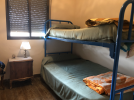

@camino07, I have very fond memories of an excellent lunch in a slightly upscale place in Coca. I can’t remember the name. Could it be this one?Had late dinner again in an Artisan restaurant near the castle. Morcilla, egg and chips. Yum !
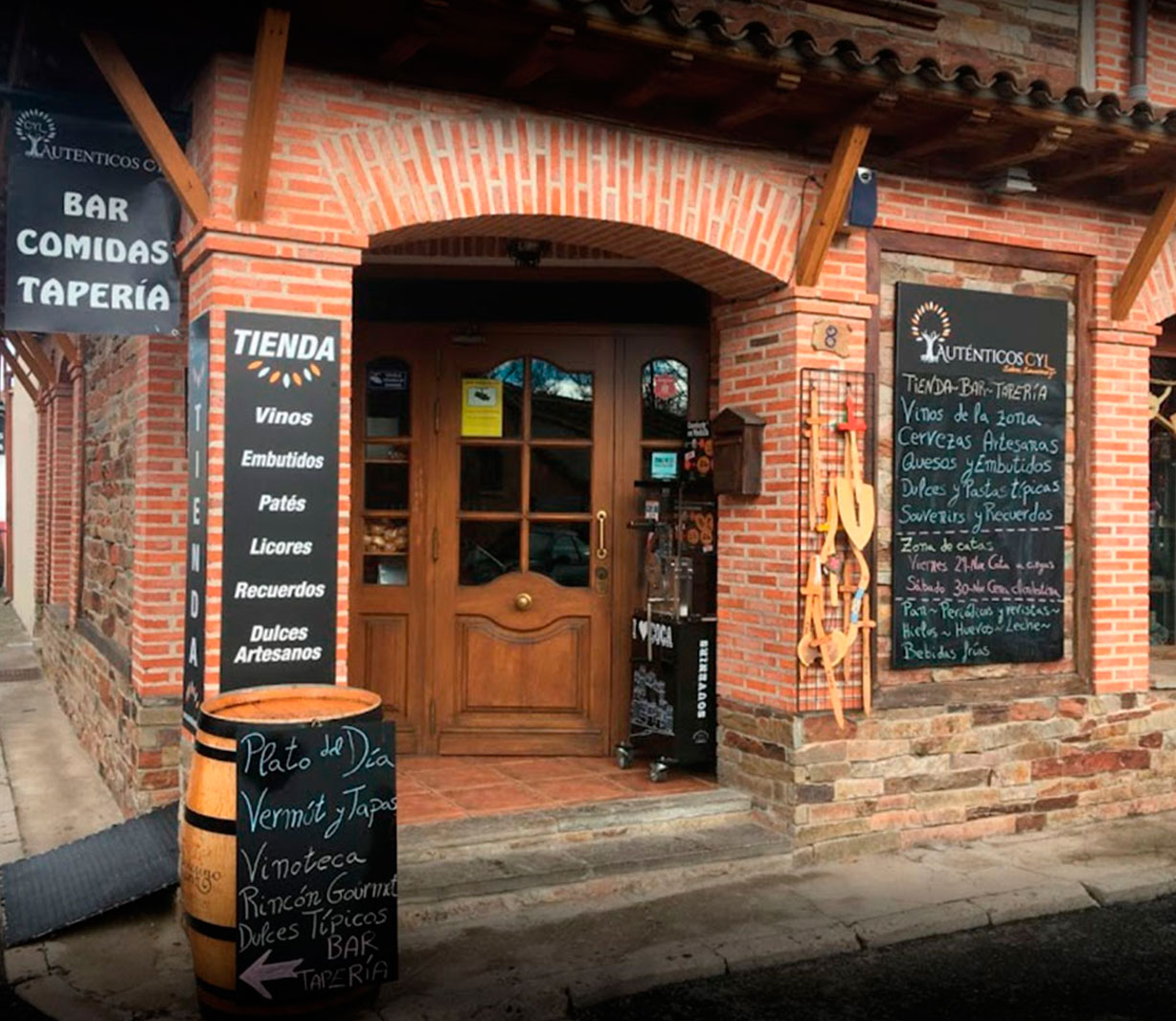
 www.autenticoscyl.com
www.autenticoscyl.com
Joe and I stopped in Puente Duero and thoroughly enjoyed that albergue! The first time we walked the Madrid route, we made the mistake of following the yellow arrows into the forest after the bridge at Valdestillas. We walked a few extra kilometers before finding our way back to Puente Duero. Next time, we found the left turn after the bridge and followed the highway to the Albergue - I think it was €6. I remember this town as having two tiny markets AFTER the albergue which was a little inconvenient.
To Puente Duero
Notice! Got lost today. So pay attention. We began early because of the heat, and it was actually cold first thing this morn...caminosantiago2.blogspot.com
Very much out of context but @VNwalking s post reminded me to add my appreciation of @timr s earlier contributions on which I very much relied. Well written and tremendously informative. One of the (many) times I have reaped more than I have sown on here.I've been fishing for tips in older posts, with some success:
@timr's posts are really a joy to read.
Thanks, Tim!

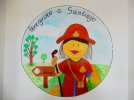

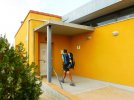

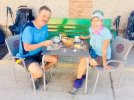
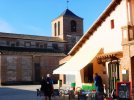
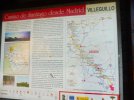
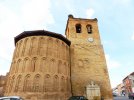
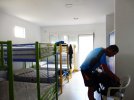
It may be a new albergue in Alcazarén, my notes say 'clean and new'. It was similar to Villeguillo - a newly built council building, one half of which was a kind of depot/garage/equipment store and the other half a well-equipped little accommodation section with bunks, bathroom, kitchenette (which we didn't use because the middle of the bars in town did a vast salad and main dish). The keys to Alcazarén albergue are at the tourist office. The various ayuntamientos and communities along the way really seem to be trying to make the Madrid a viable camino. We skipped Coca but would like to have stayed and we were able to go round the castle without a pre-booking (but that may have changed). The walking for these stages is not hard, it is level and mainly on sandy tracksWell the great thing about the Madrid is that the pilgrim infrastructure is good enough that there really are different ways to stage it. I really liked the little albergue and the beatiful cloister in Santa María, and I also liked Coca and was glad to have stayed there. So especially for those who are feeling energetic after a rest day ini Segovia, doing the 32 km to Santa María, with then two short days (22 to Coca and 25 to Alcazarén) is an option.
And Alcazarén has two mudejar romanesque churches (or parts thereof) with some lovely brick apses and multi-layered exterior arches in the walls. Not sure how to best describe it. Has anyone ever been able to go inside? I think only one is still used for services.
The albergue in Alcazarén is a bit weird. I remember it being really stuffy and not having much ventilation — my vague memory is that I was kind of locked in with no air.

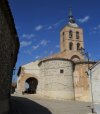
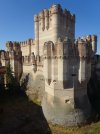
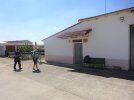
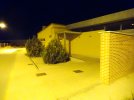
When we walked the Madrid Way we collected the keys to the albergue from Bar Real and returned them in the morning, as we had read in the CSJ guide. Bar Real also had the collection tin for donations. That was in September 2018The keys to Alcazarén albergue are at the tourist office.
Maybe that was out of office hours, my diary definitely says 'tourist office' and we passed through in September 2018 so you must have been just before or just after us. I would go to Bar Real first, just in case. I don't think the tourist office serves cañas.When we walked the Madrid Way we collected the keys to the albergue from Bar Real and returned them in the morning, as we had read in the CSJ guide. Bar Real also had the collection tin for donations. That was in September 2018
We arrived on a Sunday - in any event there was no mention of a tourist office in our guidebook, just the Bar Real. It’s a pretty small place so I’m sure pilgrims will find the albergue and the key one way or anotherMaybe that was out of office hours, my diary definitely says 'tourist office' and we passed through in September 2018 so you must have been just before or just after us. I would go to Bar Real first, just in case. I don't think the tourist office serves cañas.
We loved this bar so much! Like you we were also a but concerned about food on this stage but Kiko came to the rescue!As we turned the corner into Villeguillo, we were surprised to see the bar open. The owner Kiko greeted us warmly and we ordered our coffee. He asked if we wanted anything to eat. Though we didn’t need to, we ordered a tortilla – this guy doesn’t get a lot of passing trade. A few minutes later he was back with our coffees and, soon after, one of the best ham and cheese tortillas I’ve tasted in Spain or anywhere else. Yum.

Yes, I'm sure it's new. From April 2019:@peregrina2000 Maybe it was not the same albergue you stayed in - it looked very new. And we slept next to an open door to the internal courtyard.
She had walked 52 kms that day.
I had forgotten about these but I just went through some photos and found a shot of one of them. Love the combination of Romanesque and Mudéjar!And Alcazarén has two mudejar romanesque churches (or parts thereof) with some lovely brick apses and multi-layered exterior arches in the walls. Not sure how to best describe it. Has anyone ever been able to go inside? I think only one is still used for services.
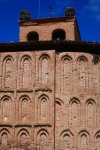
Slow walkers would prefer short days, but:There is a bit of awkward staging here that requires either a couple of short days or one longish one, but there seem to be enough places to stay that it should not be a problem to walk the distance you prefer.
Those 16 km (17.3 km according to Gronze) are probably going to define how we break this stage up.we then walk 16 km without services or provisions, to Alcazarén
Coca is a great pilgrim stop, with an albergue, castle, church and all the usual services of a medium-sized town. If you've been walking and eating solo so far, this might be where your schedule starts to align with other pilgrims.
Had late dinner again in an Artisan restaurant near the castle. Morcilla, egg and chips. Yum !
I was thinking that we would possibly break this stage into three days. I know a lovely lady who would be very grateful for these short daysAnd I totally echo the positive opinions of everyone else who has stopped in Coca.
No doubt the Frenchman at the Bar El Rinconcito would welcome these two slow walking, French speaking pilgrimsThe 15th century castle in Coca is quite something. After wandering around the castle, we enjoyed an aperitif, and later dinner, at a nearby outdoor cafe - Bar El Rinconcito - owned by a Frenchman who had lived in Spain for 45 years. He was thrilled to pass some time with Dominique and converse in his own language.
I am thinking when I finally get to walk I will also delight in shorter-than-before distances.was thinking that we would possibly break this stage into three days. I know a lovely lady who would be very grateful for these short days
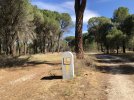
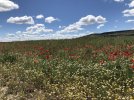
I agree. I feel that the Madrid Way just sits there in the background - maybe in the shadow of many better known cousins - doing its own thing, with no fanfare. It doesn’t boast - but it has so much to offer.Have I said already that this thread makes me really want to walk the Camino de Madrid again
In albergues? I would say no. The albergues are small, usually containing 4-8 beds.If this virtual camino was actually happening IRL i.e. in a group of 10-15, would there be enough beds to accommodate everyone?
On both my trips, I recall the Tres one in the council house holding only 4 people, but all the others I stayed in were able to hold a dozen or more.In albergues? I would say no. The albergues are small, usually containing 4-8 beds.
My exact memory is a bit hazy but the ones I'm thinking of are Ray y Rosa (4), Santa Maria la Real de Nieva (6 IIRC) and a few others that I recall as being small (e.g. Alcazarén and Puente Dero).On both my trips, I recall the Tres one in the council house holding only 4 people, but all the others I stayed in were able to hold a dozen or more.
The short answer is 'no'. Several of the albergues on the Madrid have less than ten places. Is this a hypothetical question or are you actually planning to walk the camino de Madrid in a group of this size? This is a personal opinion, but I feel groups of this size should book ahead rather than rely on unreserved, first come, first served albergues.If this virtual camino was actually happening IRL i.e. in a group of 10-15, would there be enough beds to accommodate everyone?
Hypothetical, though I am considering doing it solo in March/April.The short answer is 'no'. Several of the albergues on the Madrid have less than ten places. Is this a hypothetical question or are you actually planning to walk the camino de Madrid in a group of this size? This is a personal opinion, but I feel groups of this size should book ahead rather than rely on unreserved, first come, first served albergues.
Thanks for linking to @timr 's Ovine incident. Now I have tagged both it and the Bovine incident (Day 3 on our thread). After we finish this virtual walk, I'll create a thread "Selection of good threads about the Camino Madrid".First stop was in Villeguillo (6.7kms) - the scene of the crime in @timr 's Ovine incident
I had breakfast in the bar and was introduced to the hospitalera of the albergue and some other local characters. It's a good idea to stop there as there's nothing else until Alcazarén, but also because they seem to enjoy welcoming pilgrims.
This anecdote struck a chord. On this Way - where our encounters were more with locals than pilgrims (few and far between when we were walking) - we always felt warmly welcomed. We had a similar experience some years earlier on the Mozarabe.As we were leaving Alcazarén this morning, a construction worker yelled out to me, ‘¡Bravo! ¡Bravo! ¡Camino de Santiago!’ It was one of those little moments that makes the Camino de Madrid special, because pilgrims are still somewhat of a curiosity here and locals aren’t yet jaded by our presence.
If anyone wants to crossover to the Levante, Simcanas is the place to stop. In that case, with a day to spare, it might be worth staying at in the wonderful albergue and doing what Laurie suggests;it has a bearing on the question about stopping in Puente Duero or Simancas
I slept in Puente Duero and then walked to Simancas and into Valladolid for a rest day. But I think a good alternative would be to bus into Valladolid from Puente Duero and then walk or bus from Valladolid to Simancas and continue on.
You can also cross over on the GR14, roughly 58km along the Duero between Simcanas and Castronuno on the Levante. Besides following the Duero through amazing Tordecillas where Portugal and Spain divided their New World empires, and not far from where Juan Bravo met his grisly end in Villalar de los Comuneros, it's migration time, so there'll be lots of birds.

It is indeed a long day by slow walkers standardsThis day might be longer than I want, but I'm bringing us to Simancas for a reason. The next stage offers some interesting options that we will discuss in "Day 9" including a side trip to Valladolid. But let's not go further than Simancas yet.
A detour to Valladolid is definitely in our plans. Which means either a stop in Puente Duero or Simancas will work for us.But definitely plan to detour into Valladolid!!!! (I will not elaborate on that thought now, since I know we are stopping in Simancas, but I think it has a bearing on the question about stopping in Puente Duero or Simancas).
Our first day on this stage will indeed take us to Valdestillas. If we are to walk to Simancas, it's a great half way point. And the distance suits my darling!At 16 km from Alcazarén is the town of Valdestillas (population 1700) with shops, banks, train to Valladolid, etc. There is a restaurant and lodging at Meson Hostal Taquita.
I found a Wikiloc track from Puente Duero to Valladolid. It's an 11 to 12 km walk, quite manageable for slow walkers.If time is of the essence, by all means forge ahead to Simancas. If a day in Valladolid is on offer, that can be done easily from Puente Duero, too, which is essentially a suburb. The walk from Puente Duero to Simancas is pleasant but nothing spectacular.
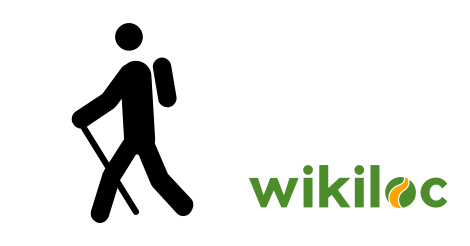
Puente Duero: the albergue is great, the town is non descript.I hate to disagree with my fearless leader, but I would highly recommend stopping in Puente Duero. It’s an albergue run by the Vallodolid amigos (as is the one further on in Villalon de Campos). Really nice vibe, though the town itself is a bit of a downer.
For this virtual walk, let’s push on another 6 km to Simancas (population 5000) where there are several hostales
Simancas: lacks a nice albergue, the town is "cutesy".Simancas itself is kind of cutesy and the castle is a state archive. Heavily remodeled but it’s very photogenic from the outside.
In 2018, we had many such experiences, a road worker, laying asphalt on a road near Geneva, asking us to pray for him in Santiago. A retired farmer, on the Voie du Puy, saw us in a little village, and came to ask us: "Combien de péchés avez vous fait pour devoir faire ce pèlerinage?" (How many sins have you made that you have to walk this pilgrimage). And the elder of a village on the Norte who had fled Spain to avoid military service, and worked in Queensland: he remembered all the colourful colloquial expressions so typical of rural AustraliaAs we were leaving Alcazarén this morning, a construction worker yelled out to me, ‘¡Bravo! ¡Bravo! ¡Camino de Santiago!’ It was one of those little moments that makes the Camino de Madrid special, because pilgrims are still somewhat of a curiosity here and locals aren’t yet jaded by our presence.
If time is of the essence, by all means forge ahead to Simancas. If a day in Valladolid is on offer, that can be done easily from Puente Duero
One of the options for slow walkers, after a stop in Valdestillas and wanting to detour to Valladolid, is to walk to Puente Duero, spend a night there, and then walk the next day to Valladolid. Three days to walk 16 km, 9 km and 12 km.
Walking from PD to Valladolid, then walking from there over to Simcanas the next day seems a good idea. From Valladolid to Simcanas is all road walking, from the look of it, which surprises me, since the river would seem the perfect urban walking corridor - but there is no via verde. It's 12.5 km, OSMand says.I think a good alternative would be to bus into Valladolid from Puente Duero and then walk or bus from Valladolid to Simancas and continue on.
I was going to wait until we move on from Simancas, but as you mention road walking, I thought I would share the Wikiloc track I found:Walking from PD to Valladolid, then walking from there over to Simcanas the next day seems a good idea. From Valladolid to Simcanas is all road walking, from the look of it, which surprises me, since the river would seem the perfect urban walking corridor - but there is no via verde. It's 12.5 km, OSMand says.


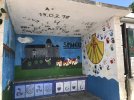
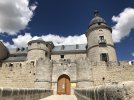
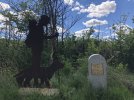


Following that track, from Simancas, you cross the river back towards Puente Duero, and then for about 6 km you follow the Acequia de Simancas and the Acequia de Valladolid until just before reaching the VA-30 highway. After that you head into Valladolid through the suburbs. The track above stops at the Centro Comercial Vallsur, but from there the Pisuerga is not very far, and you can take a cycle/walking path to the city centre, along the river. I would guesstimate the whole walk is about 13 km, of which nearly half is along an aqueduct.If you are in Simancas, this is route to Valladolid:
https://www.wikiloc.com/hiking-trails/simancas-valladolid-20460398
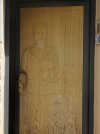

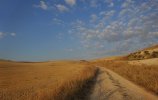
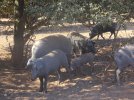
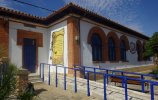

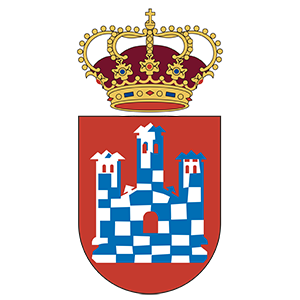 www.xn--uruea-rta.es
www.xn--uruea-rta.es
 www.xn--uruea-rta.es
www.xn--uruea-rta.es
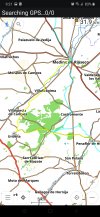
From:As for the town of La Santa Espina, it was created by the National Institute of Colonization to contribute to agrarian development in the postwar era, being its promoter Rafael Cavestany y Anduaga , Minister of Agriculture of the moment. The town's works began in 1955 , ending in 1957.
The location of the town was fixed on a farm that the National Institute of Colonization had acquired from the heirs of Susana de Montes y Bayón, widow of the Marquis of Valderas .
We also missed out on seeing the ossuary in Wamba.The famous ossuary in Wamba opens later in the day so we missed out on that particular treat. This is where meseta terrain seems to start. Peñaflor is a slightly bigger place with shops but was recovering from a collective hangover when we passed through in the morning. I am fairly sure it has an albergue.
Walking to Valladolid seems fairly straightforward from Puente Duero or Simancas. Getting back on the Camino is a little more complicated, especially if you want to be in Wamba during opening hours of the church and ossuary.
Wamba looks like a not to be missed stop. What a shame there is no lodging in Wamba!The highlight of these two stages, of course, was Wamba. We were super lucky to arrive at the church just as a guide had started giving a tour to a Spanish lady and her two daughters. We spent almost an hour inside the church and the ossuary with them and I loved it.
@jungleboy , what day of the week did you walk through Wamba?Horario:
Horario Oficina de Turismo: viernes de 17 a 19,30 h. Sábados, domingos y festivos: de 11 a 13,30 hs. y de 17 a 19,30 h. El resto de la semana, concertar visita al teléfono: 679 142 730. Entrada: Individual:2 €. Grupos de más de 15 personas: 1 €
For us slow walkers, unless we can organise an earlier visit in the day, the problem is getting from Wamba to our next lodging in time. It is 7 km back to Ciguñuela, or 7.7 km to Peñaflor de Hornija. Easy for able bodied peregrin@s, a different story for slow walkers if the visit is late in the day. A comment on Gronze notes that the climb into Peñaflor de Hornija is one of those you will never forget:For me, I think that some bus or taxi assistance out of Valladolid might be necessary in order to get to Wamba at a convenient time.
el pueblo se halla en lo alto de un cerro, y la última cuesta es de las que no se olvidan
One option is to walk to Valladolid from Puente Duero, and then return to the Camino at Simancas. In particular, I like the south bound part of the track above (the one on the left), as there is less road walking. It's a 13 km walk.Here is a circular walk from Puente Duero to/from Valladolid, so presumably you could walk on either part:
https://www.wikiloc.com/hiking-trails/pza-circular-puente-duero-valladolid-25294745
We would then walk the track above in reverse, from Valladolid to Simancas, and stop in Simancas.If you are in Simancas, this is the route to Valladolid that @AJ had found and described
https://www.wikiloc.com/hiking-trails/simancas-valladolid-20460398
This is another good option, walking from Simancas to Valladolid, and following the above track, stopping in Ciguñuela as before. That's a 13 km day, according to the Wikiloc track. Then we would continue to Wamba and Peñaflor de Hornija.Once you are in Valladolid and want to leave, this track takes you to Ciguñuela, through Zaratan. It looks like you could continue walking on the road straight to Wamba instead of dipping down to Ciguñuela.
https://www.wikiloc.com/hiking-trails/valladolid-cigunuela-18789849
It is indeed a really good detour! For us slow walkers, it might be a bit difficult to do it from Peñaflor de Hornija, because of the distance, but definitely an option we would explore from Castromonte. This Wikiloc track gives a distance of 18.25 km each way:But please bear with me because this is a really good one.
From Peñaflor, instead of forging ahead to Castromonte, we can take a left - either from the village proper or about halfway to Castromonte - and walk via La Santa Espina to Urueña, 20.9km.
A walled town with 189 residents, but 5 Bookstores and 12 museums. Not to mention walls, history back to Roman times, and the Romanesque Ermita Nuestra Señora de la Anunciada, a beautiful example of Lombard Romanesque.

Wednesday, so it looks like we got lucky!@jungleboy , what day of the week did you walk through Wamba?
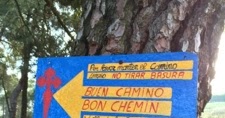
Wow. Thanks for the heads up, Annie!Joe and I went inside to see the treasure secreted behind the new retablo!
You're welcome! The other thing not to miss is the tour of the church in Wamba.Wow. Thanks for the heads up, Annie!
That is what I'm planning the entire camino around, so that I can get there when it's open.You're welcome! The other thing not to miss is the tour of the church in Wamba.
It does sound like you can phone ahead on weekdays to arrange a visit? Does anyone know this for sure?I found the opening times for the church on the Wamba Ayuntamiento website:
Horario:
Horario Oficina de Turismo: viernes de 17 a 19,30 h. Sábados, domingos y festivos: de 11 a 13,30 hs. y de 17 a 19,30 h. El resto de la semana, concertar visita al teléfono: 679 142 730. Entrada: Individual:2 €. Grupos de más de 15 personas: 1 €
Wow I had no idea. I have enjoyed the beautiful mudejar apses but never got inside. Next time!!!Joe and I went inside to see the treasure secreted behind the new retablo!
Amazing frescoes!Joe and I went inside to see the treasure secreted behind the new retablo!
It's pretty spectacular!Wow I had no idea. I have enjoyed the beautiful mudejar apses but never got inside. Next time!!!

